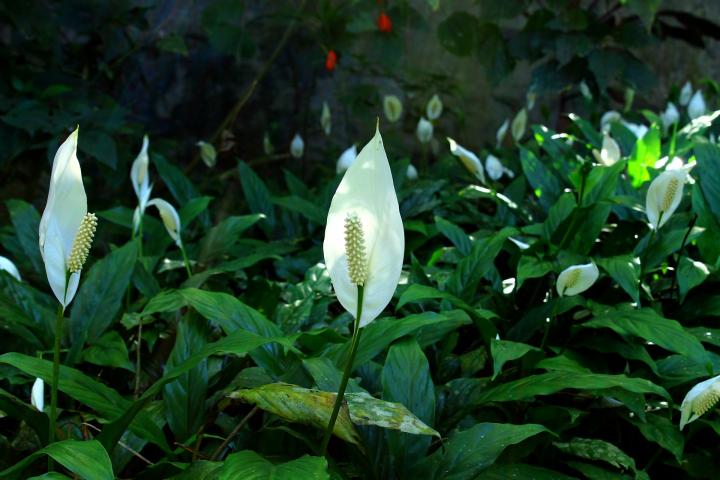
Peace lily is one of the most common houseplants because they’re easy to grow and beautiful, too! Here’s everything you need to know about caring for a peace lily in your home.
HOW TO PLANT, TRANSPLANT, AND DIVIDE PEACE LILIES
- Use a well-draining, all-purpose potting soil.
- Repotting annually in the spring is good for the peace lily, as the plant will appreciate the refreshed soil.
- Eventually, the peace lily may grow too large for its pot, at which point it can be divided. Remove the plant from its pot and split it into smaller plants, being sure to leave several leaves per clump. The peace lily grows from rhizomes, so it can tolerate a bit of tough treatment during dividing.

CAN PEACE LILIES BE GROWN IN WATER?
Yes, peace lilies can be grown in water; they are often sold in vases without any soil. Ideally, the base of the plant should be suspended above the water line, either by a specially-made insert or a layer of small stones. This allows the roots to grow into the water, but keeps the base of the plant and its leaves from being constantly wet, which can cause rot.
HOW TO CARE FOR A PEACE LILY
- Keep the soil moist, but do not overwater. Peace lilies can tolerate short periods of dry soil, but their leaves will start to brown if neglected for too long.
- Peace lilies are sensitive to chemicals commonly found in tap water, such as fluoride, which may cause brown leaf tips. Use filtered, room-temperature water, if possible.
- Peace lilies enjoy high humidity. Misting their leaves or placing their pot atop a moistened tray of gravel can help to increase humidity.
- Peace lilies are not heavy feeders, so fertilize only occasionally. To encourage spring and summer growth, fertilize every 6 weeks or so with a balanced houseplant fertilizer starting in late winter.
- Peace lilies are a tropical plant, so keep them in temperatures above 60°F (16°C) and away from cold, drafty windows. They do best in temperatures upwards of 70°F (21°C).
- Keep these plants out of direct afternoon sunlight, but in a well-lit area. An east-facing window is ideal, as they will be exposed to the warmth of the morning sun but avoid the intensity of mid-day rays.




